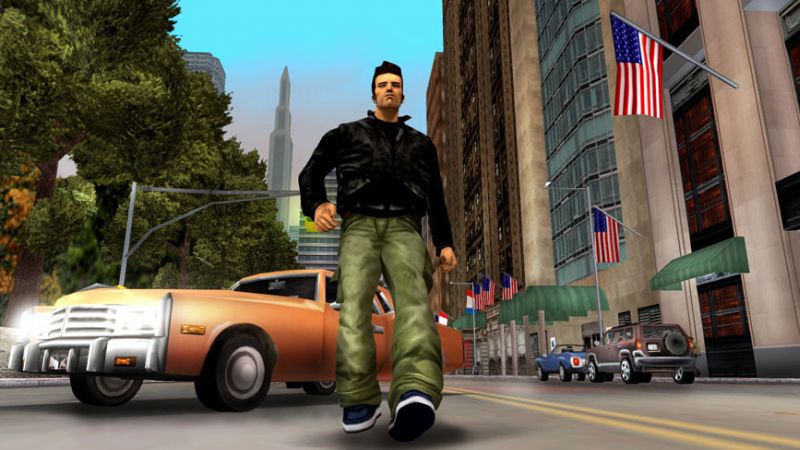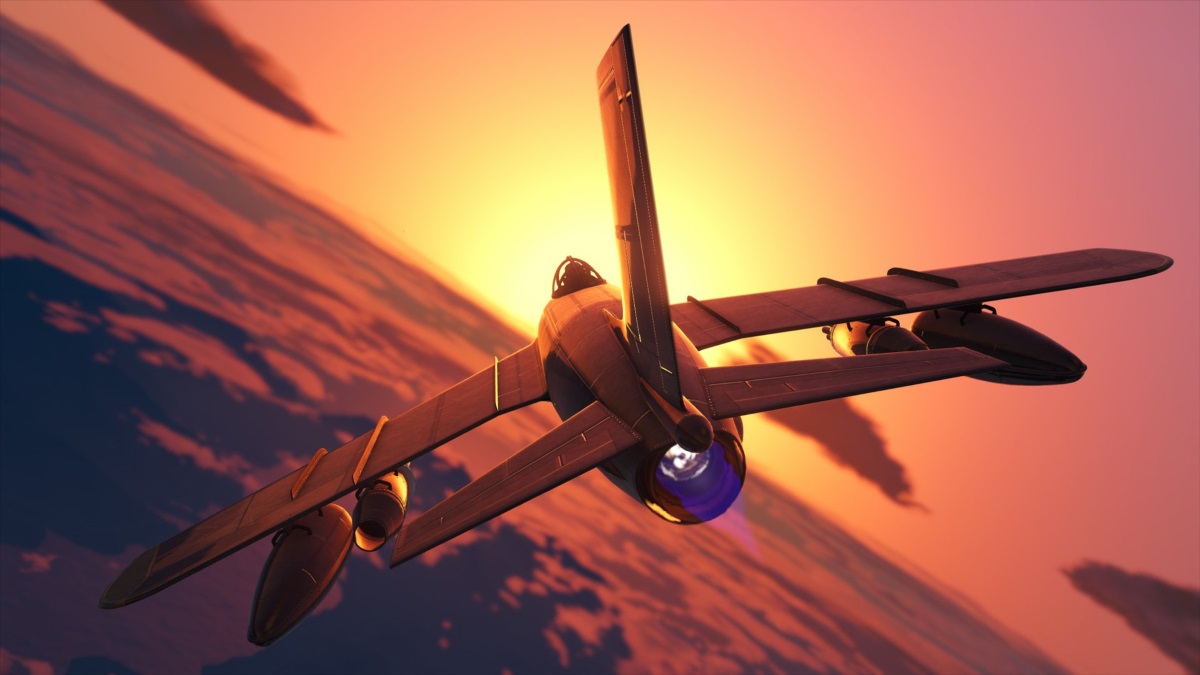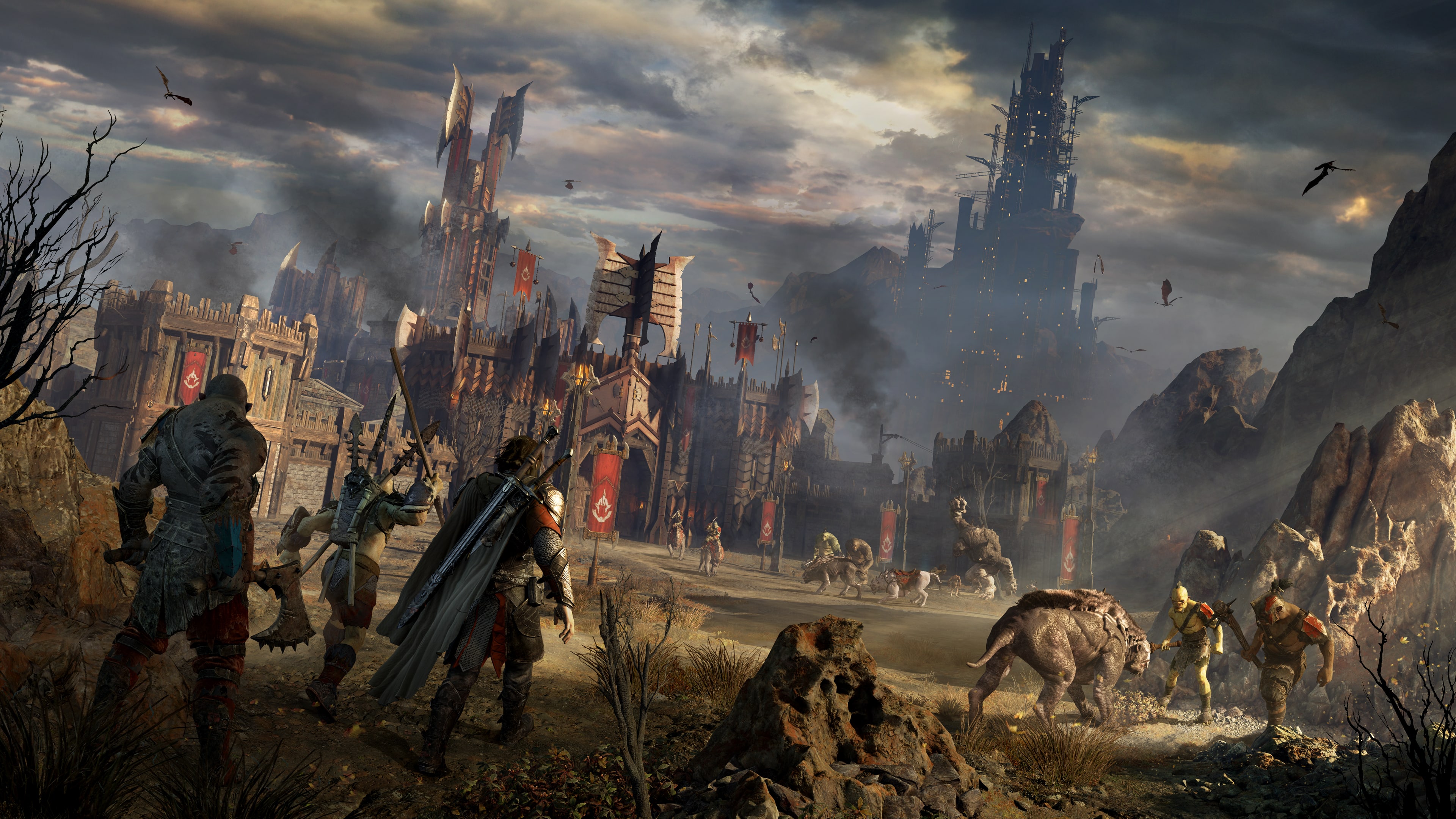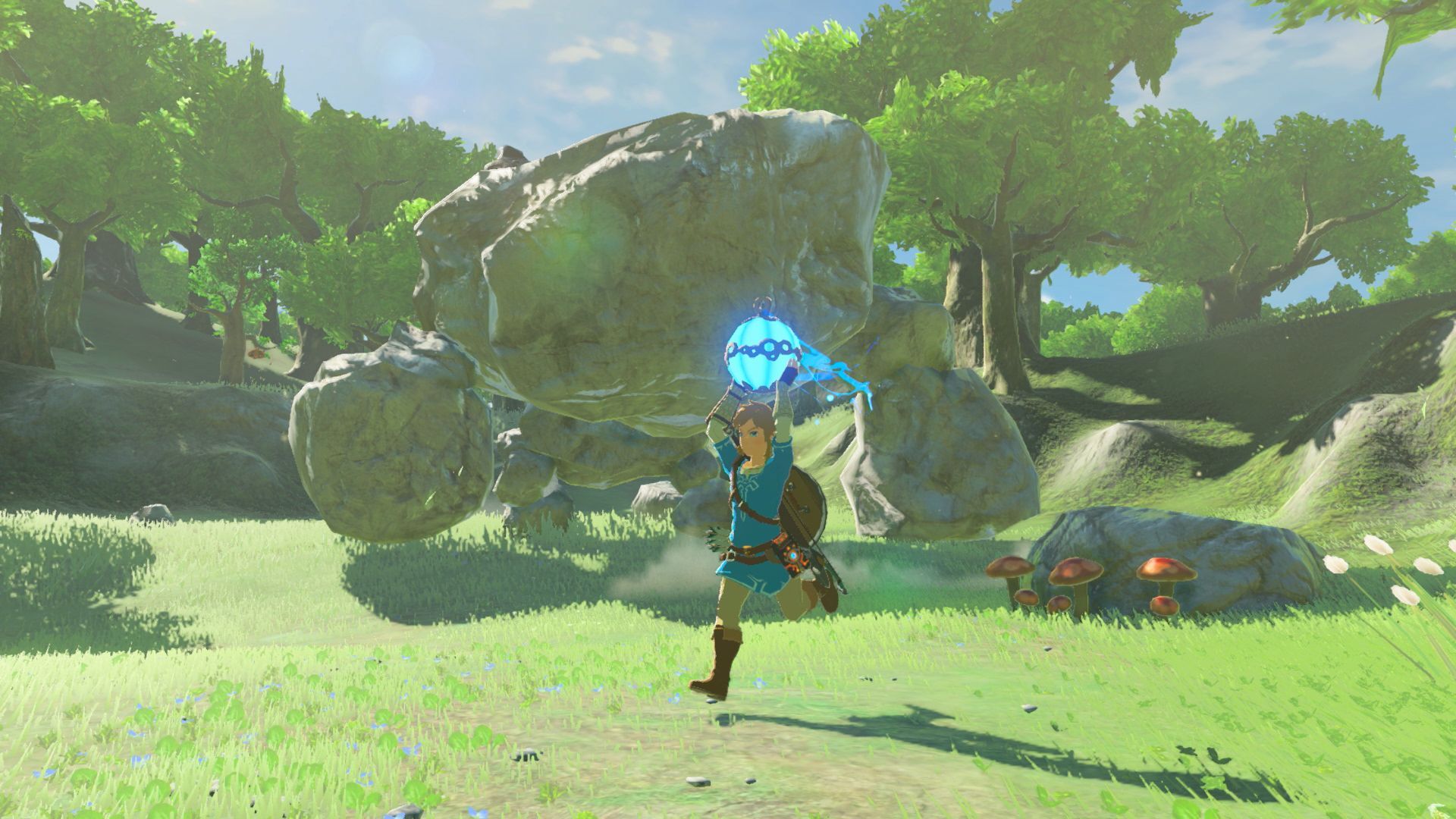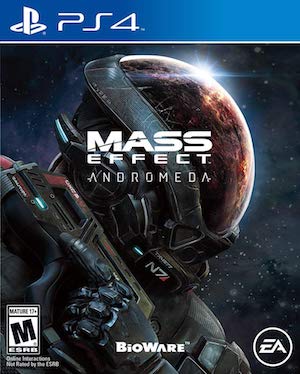
When Grand Theft Auto 3 first rolled around, what did you first feel? Did you feel like the world was coming to an end and that this was it? Did you think this was the pinnacle of gaming and nothing else – past, present or future – could top it? Maybe you wondered how such a game could be good with its gratuitous violence and foul language? It’s all a matter of perspective and values, honestly.
But when we first booted up Rockstar’s 3D open world title, there was an innate feeling that had overridden everything else. There was that idea, that concept and that facilitation of our deepest, darkest desires in video game form that just didn’t seem possible until then.
Freedom.
"To a large extent, Grand Theft Auto 3 pushed you to set your own goals even as it offered a traditional (by today’s standards) campaign and side missions."
For the record, open world games had been around for a while before Grand Theft Auto 3. There was Mucky Foot Productions’ Urban Chaos, a game about Union City PD officer D’arci Stern and her attempt to pull a chaotic city back from the brink. Urban Chaos had a set number of levels but these were large maps that the player could freely move in. Citizens could be conversed with, crimes could be stopped, side missions could be partaken of and there were even some indoor areas to explore. One neat little twist was being able to arrest enemies which would change people’s impression towards you. This was on top of the base story with missions like rescuing hostages and assaulting baddies.
In Grand Theft Auto 3, there were no fixed levels per say. There was Liberty City and all the intrinsic vices that lay dormant. Protagonist Claude could embark on a bloody story of betrayal and revenge. However, the real appeal lay in pushing the boundaries of what was essentially an enormous virtual playground. Players could run around, blowing things up and killing cops to raise their Wanted level, testing the game’s attempts to kill them in as bombastic a manner as possible.
Players could also hijack different vehicles and partake in side-activities that weren’t clearly outlined or obvious. Hijacking an ambulance let you take victims to medical facilities while stealing a taxi allowed for ferrying passengers while getting paid. In one of the cooler twists, it was possible to steal a police car and head to different crime scenes, doling out some vigilante justice.
Those are only a handful of things that could be done. Though the game did keep a check on the stuff completed in terms of percentage, not everything was super obvious or laid out. Much of this could be pinned on technology but while waypoints and directions were still very much a thing, Grand Theft Auto 3 didn’t try to hold your hand and explain everything the game had to offer. You really had to figure it all out for yourself, right down to the beating heart of the Statue of Happiness. What rewards were to be had from the side activities? Which were the most fun? Which were the least? Which vehicles made travelling around Liberty City easier? How could you make life more entertaining whether it was through weapons, cars and other luxuries? To a large extent, Grand Theft Auto 3 pushed you to set your own goals even as it offered a traditional (by today’s standards) campaign and side missions.
"In a sense, Grand Theft Auto 5 did much of what made Grand Theft Auto 3 so liberating – it gave us an immense playground rife with details and the real joy was just getting out there and exploring it."
To say that this game (and its sequels Vice City and San Andreas) caused a massive upheaval in game development at the time would be an understatement. Suddenly, every game wanted to be an open world title. After San Andreas, every game wanted their worlds to be roughly crime- and gangster-centric. Some clones like Saints Row saw the meaning in Grand Theft Auto 3’s side activities but attempted to incentivize them further, giving people an actual progression-related reason to play them (not to mention pushing the boundary of possible shenanigans). But that feeling of freedom was tough to replicate for a number of titles, whether it was because of glitches and terrible gameplay or just not thinking outside the box in terms of world design.
When I played Grand Theft Auto 5 for the first time in 2013, it wasn’t as this brave new open world experience that redefined a generation. At least, not in the sense that I thought. It’s not because open world games were becoming more common, as evident in the rise of Assassin’s Creed and The Elder Scrolls 5: Skyrim. It was because for me, especially in the wake of developing a connection to more grindy looters, Grand Theft Auto 5 was approached in the completionist sense. I sat there wondering just how much cash I could grind out to buy all the cool stuff.
To the game’s credit, it did a great job dissuading that urge to grind and finish everything. It presented a compelling story and side missions, not to mention some phenomenal heists (with many outcomes presenting the futility behind high-stakes, high-paying crime). The entire map was opened from the start for the first time in the series. However, much of this pivotal content was one-and-done. The real appeal, once again, lay in walking around Los Santos and actually figuring out all the crazy little things you could get up to. All the various stunts you could pull off, the characters you could speak to, areas to visit, mysteries to solve, vehicles to steal, playing fully realized games of golf and tennis, messing about with the Epsilon Program, skydiving or just murdering everything out there (again) – the list goes on.
In a sense, Grand Theft Auto 5 did much of what made Grand Theft Auto 3 so liberating – it gave us an immense playground rife with details and the real joy was just getting out there and exploring it. Yes, it had markers and clearly designated side activities for its three characters. It had a linear story that would guide you and feel prey to the many “essentials” of the triple-A gaming experience. And yes, it kept track of all the things you did in a universal kind of record book but that sense of freedom was unrivaled.
"I’m not trying to hate on Ubisoft but for some people, it’s hard to look at games like Ghost Recon: Wildlands and The Crew 2 as pushing gigantic maps whose missions and icons as little more than open world checklists to tick boxes off of."
Times change. Systems evolve. Well, it’s probably more accurate to say that certain systems represented a more enviable standard as the years went by. Assassin’s Creed was still its collect-a-thon self but Assassin’s Creed Origins established the series as more of a third person action RPG set-up with quests, points of interest and loot as the central gameplay loop. Tom Clancy’s The Division dotted its map with numerous side missions while lending a loot-grinding aspect to the overall shared world shooting. Watch Dogs 2 and Far Cry 5 did away with towers but were still about completing rudimentary missions to hit a certain milestone and garner progression.
Also, look at Mass Effect: Andromeda, Saints Row 4, State of Decay 2, Just Cause 3, Middle-Earth: Shadow of War and so on and so forth. Each game had its own open-world bent but seemed primarily geared around completing a set checklist of missions and objectives for the sake of leveling up or gathering more followers or clearing icons on a map. I’m not trying to hate on Ubisoft but for some people, it’s hard to look at games like Ghost Recon: Wildlands and The Crew 2 as pushing gigantic maps whose missions and icons as little more than open world checklists to tick boxes off of.
Why have many open world games gone down this route? Why do some games handle it better than others. Is there really a sense of freedom and/or mystery like the good ol’ days? The chance to truly do what you want or feel part of this world rather than a typical playspace?
It’s first important to note that all of the above games more or less fit into the sandbox genre. This means that the player is taking non-linear routes to reach their goals. Said goals could be defined in a number of ways but it’s not strange for a game to define these for the player. Remember how the first Saints Row tried to make side activities more cohesive and fitting into the larger scheme of things? Think of liberating camps, garnering followers, achieving planet viability or even just having a bad-ass set of fortresses and followers as that larger scheme for the other titles.
"The Legend of Zelda: Breath of the Wild could be pointed to as a paragon of open world design. However, some fans of the franchise don’t really consider it exceptional from a story-telling point of view."
One could argue that many games don’t offer the freedom that Grand Theft Auto 5, much less 3, did. Gameplay-wise, the diversity in gameplay concepts is greater than ever. In Middle-Earth: Shadow of War, you’re fighting to build up an army of followers while invading fortresses, exploiting the Nemesis system for bolstering that army or installing spies, and whatnot. Along with the free-flowing third-person combat, there is a range of stealth abilities and monsters to control that can wreak serious havoc.
Let’s look at Mad Max. For whatever you might say about the game, the core loop of exploring the open world, assaulting convoys for parts and further augmenting your death machine is appealing. Vehicular combat is a huge draw but so is fighting through these different outposts, beating down baddies to garner resources for yourself. In essence, this is what Mad Max is even if the side quests and missions are fairly rote.
Could it be solid writing and world-building that sets certain open world “masterpieces” apart from others?
The Legend of Zelda: Breath of the Wild could be pointed to as a paragon of open world design. However, some fans of the franchise don’t really consider it exceptional from a story-telling point of view. Case in point, the lack of exposition for Ganon and his motives, the characterization and otherwise reduced role of Princess Zelda – you could pick holes in Breath of the Wild’s story for days. Okay, maybe not days but definitely for a good few hours.
The world itself is exceptionally well built though. Link can’t just rush to Hyrule Castle and face Ganon since his stasis has left him significantly underpowered. Some guidance is provided to familiarize players with the world and there’s even a base direction to follow with freeing the Divine Beasts. The strong subplots and characters inherent in these quests also help give some sense of progression, as the more Divine Beasts freed, the weaker Ganon can become in the final fight.
"This is the result of Nintendo’s design. Divvying the world up into triangles and rectangles, it carefully controlled movement and the flow of exploration."
Breath of the Wild lets you choose your own path, however. What order you’ll tackle the Divine Beasts in, how many Shrines you’ll visit to augment your Hearts or Stamina, the utter depths and insurmountable highs you’ll go to for discovering rare materials to craft better armour, scavenging and foraging for better meals to temporarily boost stats – these choices are left up to the player. Even the Divine Beasts don’t have to be freed – after a point, the player can head to Hyrule Castle and fight Ganon since the actual area relies on knowledge of bosses, how many weapons and meals you have, armour level and parrying skill. Heck, after the opening area, you can ignore everything and just go exploring.
While more “traditional” dungeons are lesser in number here, the Shrines also provide a surprising amount of space for creativity. Look no further than players double-jumping with shields to bypass entire sections or connecting circuits using metal weapons for that kind of creativity. Another notch in Breath of the Wild’s strap is how superbly it enables getting out there and exploring your surroundings.
This is the result of Nintendo’s design. Divvying the world up into triangles and rectangles, it carefully controlled movement and the flow of exploration. Using data to properly track play footsteps and seeing which areas players would typically avoid, Nintendo created numerous points of interest to draw them in. The result is unique monster camps and hideouts, Shrines, mysteries like the dragons, villages, towers, NPCs that have unique things to sell, world bosses, mazes, side quests, and so on. There’s also an element of collecting with all the Shrines, Korok Seeds, Memories and photographs that exists as an overall meta-game for those who want to keep grinding. But the core gameplay loop encourages exploration, even if it ordinarily punishes you for going beyond your means.
None of the above mechanics are new, to be frank. They’re building blocks for the core gameplay’s base. It’s how that base is arranged and the overall gameplay is executed, not to mention the world’s make-up with so many unique sights and sounds, that enable a sense of “true” freedom.
"So while open world games aren’t necessarily dead in terms of freedom and impetus to explore, why do so many games seem to fall back on a more checklist-style of questing and exploration?"
Let’s look at Horizon: Zero Dawn. For all intents and purposes, the game is a traditional open world action RPG in the vein of The Witcher 3: Wild Hunt. Players can take on extensive quests, explore different points of interest, hunt down machines for crafting materials and complete a plethora of side quests. Synchronizing with a Tallneck opens up more of the map, revealing new missions and points of interest like in old Assassin’s Creed titles. So why does it feel so much more fresh and compelling than your average open world game? Because of its writing and world-building.
The characters aren’t God of War-level compelling but there are some genuinely likeable personalities throughout Horizon: Zero Dawn, to say nothing of Aloy herself. Furthermore, there’s a mystery at the core of the game that drives the urge to explore and venture further out into the wild. The world-building makes use of familiar tropes and mechanics from games like The Witcher 3, Monster Hunter and Assassin’s Creed.
However – and gorgeous presentation aside – it packages them together in a compelling way. You could hunt wild Machines, each with their own unique traits and behaviours, for spare parts. Alternatively, you could head to the Cauldrons and attempt to garner new overrides and fight some tough bosses there (the fact that Cauldrons aren’t properly revealed until you’re close enough further incentivizes exploration). Various trials, unlockable weapons, Tallnecks NPCs and much more litter the world but Horizon encourages you to strike out spontaneously while rewarding you amicably.
So while open world games aren’t necessarily dead in terms of freedom and impetus to explore, why do so many games seem to fall back on a more checklist-style of questing and exploration? Why do so many Ubisoft tiles like The Crew 2, Ghost Recon: Wildlands, Assassin’s Creed Syndicate, Far Cry 5, Watch Dogs 2 and Tom Clancy’s The Division partition their activities into specific tabs, whether it’s luring out Joseph Seed’s Heralds, completing missions to unlock specific portions of your home base to enable specific skills in Manhattan, or garnering followers to progress to the next tier of racing?
"It’s worth noting that even if numerous open world games, particularly from Ubisoft, suffer from lacklustre writing, there’s nothing wrong with appreciating them."
Honestly, it’s because there’s an appeal to that core gameplay loop, segregated into smaller portions that add up cumulatively into one big package of content. When you load into Ghost Recon: Wildlands, you have the freedom of exploring and liberating camps, causing random chaos, finding random weapons and whatnot. However, you could also complete a few missions in a region, lure the Santa Blanca Cartel boss in question out and then either take them down or capture them to progress the story (depending on requirements).
This gameplay loop relies on some unique twists in the stealth gameplay, co-op gaming with friends, and the appeal of a large sandbox to hook players. But the very basics are easy to grasp and fall back on when necessary while players gain the benefit of progression through levelling up, acquiring new skills and new guns, and so on. It’s comfort gaming much like easier content in Warframe, Diablo 3 or Destiny could be, but with the added ability to go nearly anywhere and immerse one’s self in a completely fantastic world.
Of course, the writing can make a huge difference to immersion. Look at Assassin’s Creed Syndicate. It’s relatively similar to previous titles in terms of open world exploration, side questing and core gameplay but also brought in new combat mechanics, gang wars and even a grappling hook. However, it was the writing that truly cemented it as something special. Each side mission and famous figure felt delightfully rendered. The Frye Twins were genuinely appealing protagonists, each with their own unique set of morals that introduced relatable sibling wrinkles. Even if Assassin’s Creed Syndicate failed to really ignite enthusiasm in the franchise after the disastrous launch of Unity, it still made a strong effort with its writing to try and bring fans back in. The authenticity of the world also didn’t hurt though having to go through the motions with the same type of gameplay felt detrimental to the world-building.
It’s worth noting that even if numerous open world games, particularly from Ubisoft, suffer from lacklustre writing, there’s nothing wrong with appreciating them. The world-building may feel fairly archetypal but it works, creating a solid feedback loop that spurs players to take in the world without too many hang-ups. Could these games be truly genre-defining? Probably not but they’re definitive. They cater to an audience that wants some kind of structure, an easily discernible gameplay loop that hooks them and a world that’s interesting enough to give back what they put in.
"There’s no denying the utter craftsmanship that’s being seen in the genre today, providing experiences that build off that first destructive romp through Liberty City in fun ways."
Just look at the Forza Horizon franchise. In terms of open world structure, it’s not all that different from The Crew 2 (garner fans, unlock new cars and events and so on). However, its core gameplay loop evolves in new and interesting ways while the top-notch world-building immerses players in the environment. It’s one thing to be told you’re in Australia but details like Forza Horizon 3’s mud-caked backwaters, the dust-filled outback or the gorgeous beaches work overtime to pull you in. Having strong progression systems that strike a fine balance between realism and arcade gameplay doesn’t hurt either. Forza Horizon also scores strong by being wholly customizable, at least from the third iteration onwards. Change events and tournaments to suit your own needs or design your own tournaments and challenges from the ground-up that other players can partake in. That’s not including the freedom of customization for one’s vehicles.
The real question isn’t whether games like Horizon: Zero Dawn and The Legend of Zelda: Breath of the Wild, or even the upcoming Red Dead Redemption 2 and Anthem, will provide an unmatched level of freedom that feels emergent based on gameplay choices. It’s whether their style of open world design is possible across a wider range of franchises, especially those with yearly or bi-yearly cycles like the upcoming Assassin’s Creed Odyssey. While I personally want more personality and freedom in a world full of very significant dangers and rewards, there is something to be said about the sheer number of open world titles that successfully cater to a more worn formula.
Whether you’re a fan of first person shooters, third person shooters, loot-grinders, games-as-a-service titles with constant updates, hack and slash titles or racing games, there are a number of games just waiting to provide that dollar per hour value in a massive world. And while something truly revolutionary like Grand Theft Auto 3 may take time to come about, there’s no denying the utter craftsmanship that’s being seen in the genre today, providing experiences that build off that first destructive romp through Liberty City in fun ways.
Note: The views expressed in this article are those of the author and do not necessarily represent the views of, and should not be attributed to, GamingBolt as an organization.








